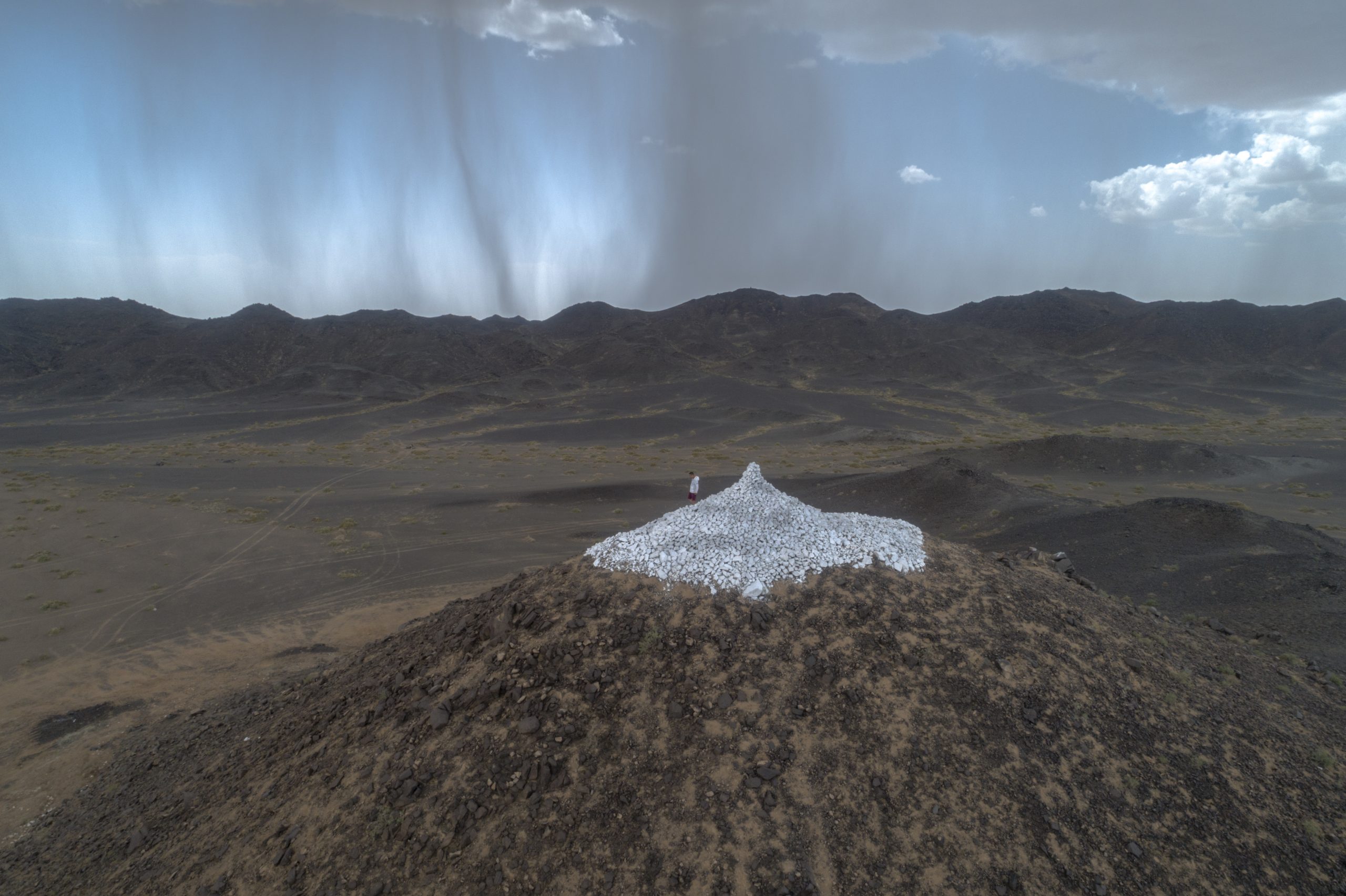Chu Bingchao (b. 1986, Pingliang, Gansu province) currently lives and works in Beijing. He graduated from the Hubei Institute of Fine Arts in 2010 and works across mediums including sculpture, painting, installation, video, and more. Throughout the course of his artistic career, he has consistently focused on social issues, personally placing himself within the symbiotic relationships between the individual and society, and between art and reality. To this aim, he has restored Buddha statues, and altered the shape of mountains, as an adventurer into the wild.
The Hill of Qifu: Night Fire is an extension of The Hill of Qifu. Using a mobile phone screen to illuminate the mountain, I held up the phone as a torchlight and walked up the steep mountain. A photographer in the distance recorded the light in each spot the mobile phone screen had lit up, until I had traveled the route as far as I can. Eventually, I collaged the tens of thousands of photographic documentation of my route, combined them into a single photo, and edited it into a video, which documents and compresses the space and time of the act of lighting up a mountain.
The Hill of Qifu: Night Fire
3-channel video, color, sound|7’40”|2018
The slopes of Qifu mountain used to be filled with apricot blossoms from the trees planted by the villagers in the 1970s, but over the years, the trees have slowly died from natural causes like droughts. Only about a hundred remain today, and their numbers continue to dwindle every year. According to an art teacher in Qifu village, the average lifespan of an apricot tree and the lifespan of a human are about the same at 100 years. Her grandfather had been one of the villagers who planted the apricot trees when he was young. In the spring of 2022, I began the large-scale planting of apricot trees on the mountain, in hopes that they will once again populate the mountain in the future. I also invited the art teacher to make “portraits” of the remaining 100 apricots trees.
The Hill of Qifu: Apricot Blossom
Oil on canvas|2022
A few years ago I encountered several mountains in Gansu’s Black Gobi where huge amounts of stones in different shapes and sizes were scattered at the foot of these mountains. I thought they must have rolled down from the mountain. Later, I returned to Black Gobi to look for the mountain I had encountered before. One by one, I made a mark on every stone that can be lifted, and transported them back to the top of the mountain. I titled the performance Returning Stones to the Mountain.
Returning Stones to the Mountain
Single-channel video, color, sound, 4k|03’48”|2019
Returning Stones to the Mountain
photography|360 x 103 cm|2019
In 2014, during a research trip to a small Northwestern town, I found a half-burnt candle in an abandoned grotto in the wilderness outside the town. From the look of the wax, I estimated the candle had been left here dozens of years ago. I held on to the candle. According to a folklore circulating around the town, dozens of years ago, Buddha statues in the grottoes in the area had been knocked down to be used as construction material for a bridge on the river. After that, I had returned to the town several times to look for the bridge, but without success.
One day in 2020, I lit the candle in a dim room and shared this story with a friend. This time, it was our faces that the candle was lighting up. As the story ended and the candle burned out, the bridge also became forever cemented as the bridge in my imagination.
The Buddha Bridge
Video installation (color, sound, white marble)|79’00”, 10.5 x 10.5 x 17.5 cm|2022-
-01-scaled.jpg)
-02-scaled.jpg)



